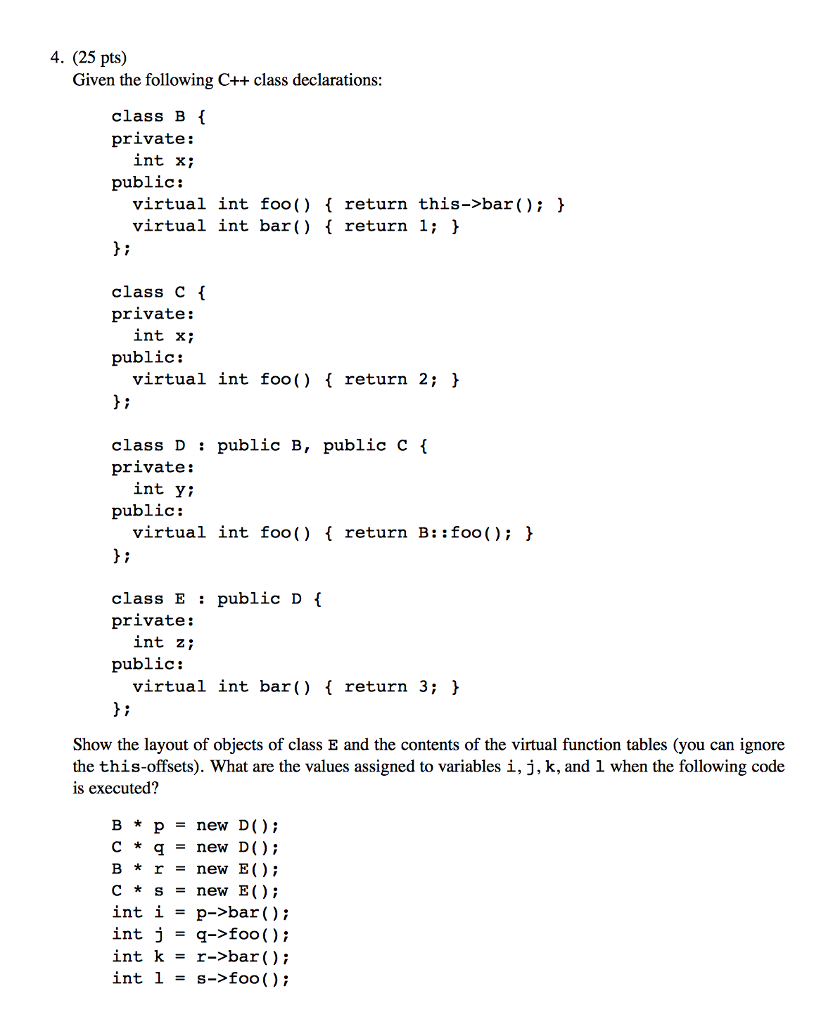Answered step by step
Verified Expert Solution
Question
1 Approved Answer
Given the following C++ class decarations: class B { private: int x; public: virtual int foo() { return this->bar(); } virtual int bar() { return
 Given the following C++ class decarations:
Given the following C++ class decarations:
class B { private: int x; public: virtual int foo() { return this->bar(); } virtual int bar() { return 1; } };
class C { private: int x; public: virtual int foo() { return 2; } };
class D : public B, public C { private: int y; public:
virtual int foo() { return B::foo(); } }; class E : public D { private: int z; public:
virtual int bar() { return 3; } }; Show the layout of objects of class E and the contents of the virtual function tables (you can ignore the this-offsets). What are the values assigned to variables i, j, k, and l when the following code is executed?
B * p = new D(); C * q = new D(); B * r = new E(); C * s = new E(); int i = p->bar(); int j = q->foo(); int k = r->bar(); int l = s->foo();
4. (25 pts) Given the following C++ class declarations class B { private: int x; public: virtual int foo)return this->bar); ) virtual int bar() 1 return 1; 1 class C f private: int x; public: virtual int foo) return 2; } class D : public B, public C private: int y; public: virtual int foo)return B::foo(): class E : public D i private: int z public: virtual int bar() f return 3; > Show the layout of objects of class E and the contents of the virtual function tables (you can ignore the this-offsets). What are the values assigned to variables i, j, k, and 1 when the following code is executed? B* p new D); C * g = new D(); B * r -new E); c * s new E(); int i = p->bar(); int j = g->foo( ) ; int k = r->bar(); int 1 s->foo()
Step by Step Solution
There are 3 Steps involved in it
Step: 1

Get Instant Access to Expert-Tailored Solutions
See step-by-step solutions with expert insights and AI powered tools for academic success
Step: 2

Step: 3

Ace Your Homework with AI
Get the answers you need in no time with our AI-driven, step-by-step assistance
Get Started


